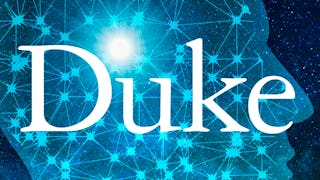In this course, we will explore the foundations of Human-Centered AI, a subdomain of artificial intelligence research that asks the core question underlying our study: How do we design AI technology in ways to augment and enhance human capability, rather than replace it outright? We will begin by examining the history of research and technology around artificial intelligence, situating our current understanding of AI in a broader historical lens that will supply some of the motivations around why it matters to design AI with a human-centric orientation. From there, we will consider some of the key concepts, tenets, and challenges of Human-Centered AI.


Skills you'll gain
Details to know

Add to your LinkedIn profile
See how employees at top companies are mastering in-demand skills

There are 4 modules in this course
Welcome! This module will build the foundations of our understanding of AI history, language, and current applications. We will also define many key terms that will recur throughout the lessons to help ground our discussions of AI concepts and tools.
What's included
1 video10 readings1 assignment1 discussion prompt
We will continue our investigations into Human-Centered AI by surveying the history of research and development in AI. We will also discuss why human-centered approaches matter now.
What's included
1 video6 readings1 assignment1 peer review1 app item
Welcome! In this module we will begin to investigate what human-centered AI is and where it came from. We will examine the path from symbolic systems, to machine learning, to deep learning, in order to understand what has shaped AI development over time.
What's included
1 video12 readings1 assignment
Welcome to Module 4! In this module we will explore ways to design AI with humans-in-the-loop. We will begin by considering how to shape AI technology to reflect human values, which will lead us into a lesson on value-sensitive design, a vital framework for embedding human values in design practice.
What's included
1 video10 readings1 assignment1 discussion prompt
Instructor

Offered by
Explore more from Design and Product
 Status: Preview
Status: PreviewClemson University
 Status: Preview
Status: PreviewUniversity of Illinois Urbana-Champaign
 Status: Free Trial
Status: Free TrialDuke University
 Status: Free Trial
Status: Free TrialSaïd Business School, University of Oxford
Why people choose Coursera for their career





Open new doors with Coursera Plus
Unlimited access to 10,000+ world-class courses, hands-on projects, and job-ready certificate programs - all included in your subscription
Advance your career with an online degree
Earn a degree from world-class universities - 100% online
Join over 3,400 global companies that choose Coursera for Business
Upskill your employees to excel in the digital economy
Frequently asked questions
To access the course materials, assignments and to earn a Certificate, you will need to purchase the Certificate experience when you enroll in a course. You can try a Free Trial instead, or apply for Financial Aid. The course may offer 'Full Course, No Certificate' instead. This option lets you see all course materials, submit required assessments, and get a final grade. This also means that you will not be able to purchase a Certificate experience.
When you purchase a Certificate you get access to all course materials, including graded assignments. Upon completing the course, your electronic Certificate will be added to your Accomplishments page - from there, you can print your Certificate or add it to your LinkedIn profile.
Yes. In select learning programs, you can apply for financial aid or a scholarship if you can’t afford the enrollment fee. If fin aid or scholarship is available for your learning program selection, you’ll find a link to apply on the description page.
More questions
Financial aid available,
¹ Some assignments in this course are AI-graded. For these assignments, your data will be used in accordance with Coursera's Privacy Notice.

